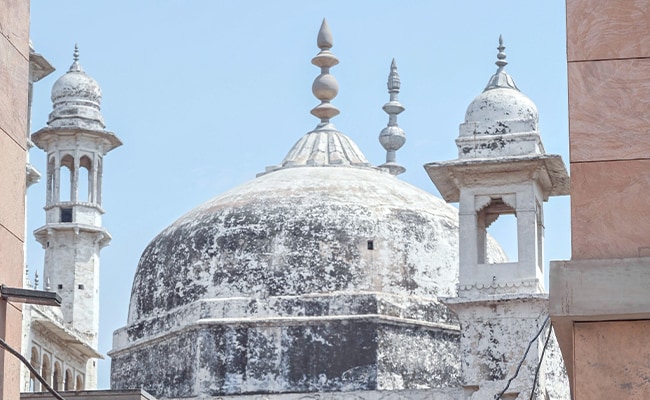
Vishnu Jain, the lawyer for the petitioners, read the report’s briefings in a press conference.
The survey of the Gyanvapi mosque has revealed the existence of a temple, complete with 34 inscriptions in various languages, which was remodelled into a mosque, the lawyer of the women petitioners told the media today after receiving a hard copy of the survey report. The Varanasi district judge had earlier refused to make the report public immediately or distribute soft copies to avoid any distortion and spread of misinformation on social media in view of the sensitivity of the case.
Gyanvapi is one of the several temple-mosque disputes that mushroomed in the country after the Ayodhya Ram Janambhoomi issue. The ASI report – submitted a month ago in a sealed cover — was distributed days after the consecration of the Ayodhya temple at a mega programme led by Prime Minister Narendra Modi.
Late this evening, Vishnu Jain, the lawyer for the petitioners, read excerpts from the report at a press conference. The Archaeological Survey of India, during its survey, found a “pre-existing structure and a well next to the corridor”.
The “Central chamber and the main entrance have a pre-existing structure,” he said.
The ASI, in its survey, “Studied the pillars and plasters and said all were part of the temple,” said Mr Jain, while reading out the ASI report. “34 inscriptions of Hindu temple were found and the inscriptions are in Devnagri, Granth, Telugu and Kannada. Names of deities Janaradana, Rudra and Umeshwara are found in inscriptions,” he added,
Reading from the report, he said, “Terms such as Maha Mukti Mandap are mentioned in inscriptions… pillars from an earlier temple were reused while making cellars.” The petitioners’ lawyer has said that they will ask for an ASI survey of Wazukhana.
The ASI had been surveying since August 4 last year on the Gyanvapi mosque premises. It has only left out the Wazukhana area, which was sealed by the order of the Supreme Court.
The report is crucial to the decision in the case, in which the Hindu side contends the mosque has been built over a temple and demands the right to worship.




